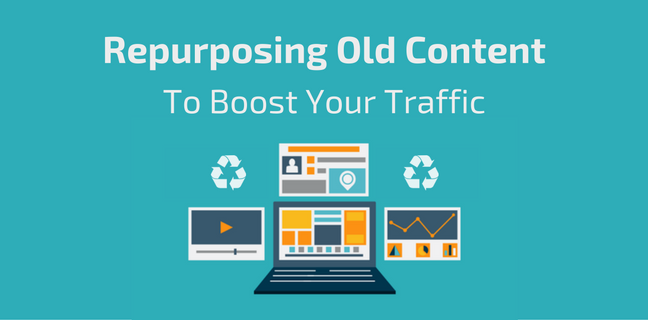You probably have old content that your audience will benefit from or are goldmines, but because it’s old, your audience misses it because the newer content takes center stage. Then what do you do? Do you just let that old content go when it could be generating traffic or income for you?
No, instead a great strategy will be to reuse your old content. Reusing old content is a way of using content you’ve already developed to create new content. Think of it as a way to recycle your old content to serve new purposes and needs.
With that said, in this post, we’re going to show you 6 creative ways to reuse your old content.
Break Down Your Content
There is always a central theme that connects a certain content. Identifying themes in your old content and breaking them down will help you create new content. For example, a blog post that talks about creating a buyer persona focus on the topic of Buyer Persona.
And you can split this theme to create multiple themes like; Benefits of Buyer Personas, Types of Buyer Personas, The relationship between Buyer Personas and the Buyer Journey, etc. The amount of content you can form around a specific central theme is limitless.
Convert to Infographics
Infographics are a creative way to repurpose old content. You can turn your blogs into a colorful representation. Infographics are easier to read and understand, so it’s a great way to ensure your audience consumes your content.
If you’re not sure how to create infographics, there are several templates you can use to create infographics from your previous content. In addition, you can also publish them as slides.
Convert to other Formats Blogs, Podcast, and Vlogs)
A very popular way to reuse content is conversion. Converting your old content to a new format gives it variety, making it appealing to more audiences. For example, you can turn blog posts into podcasts that your audience can listen to. Or you can make vlogs and link to your blogs and vice versa.
Covert Blogs to Guides
Another way to repurpose your old content is to turn blogs into guides. For example, some of the old blog posts you wrote were for the purpose of education. You can turn these blog posts into tabs by changing the format.
Breaking your blog post into steps and tips is one way to turn a blog post into a guide. If you’ve written a blog post about phone specs, for example, you can leave a guide on how to get the best phone display or how to manage power consumption on your phone.
Rewrite and update blogs
Every day new information is discovered, and knowledge on certain topics increases or becomes obsolete. No matter how well organized your blog posts are, you need to update them over time. Take, for example, a business blog post advising people to buy thick clothing for winter protection.
This blog post should be reviewed and updated today because winter is arriving later than usual in some parts of the world due to climate change. Blog posts made during the pandemic should also be updated because the world has adapted to the pandemic.
Repost on social networks
Republishing your old content on social media platforms is also a way to repurpose it, as it will expose your old content to new audiences. New audiences equal new leads, and new leads seeing your old content bring it to life.
Fortunately, this content can be reused in another format, as social media content can come in many different formats, including video, audio, image, slides, infographics, animated text, or even live streams. Plus, you can engage your new or old audience with your content by asking questions or posting it as a souvenir.
Using Facebook and Google social media platforms allows you to share content in your stories. Instagram Stories, for example, have become effective in digital marketing, making them a good platform to repost your content.
In conclusion, let me tell you at this point that you can think of your old content as a script that you can use to create new content in a different style. With that mentality and the help of our guide; you can start repurposing your old content into new and engaging content.
